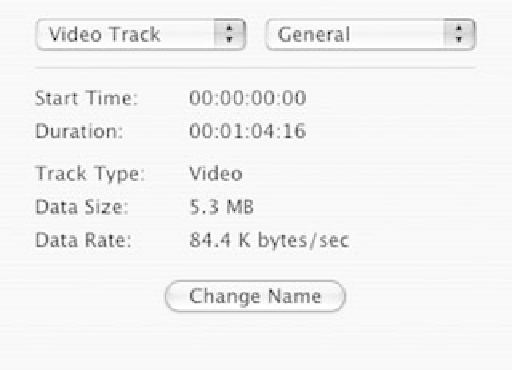Image Processing Reference
In-Depth Information
transfer with a protocol such as FTP; or the content might be data that is broadcast as a
package in a DVB transport stream or converted to a program stream and embedded as
part of the output for a broadcast channel.
On arrival at the destination the client may convert the stream back into a file and store
it in a cache. This is essentially what a digital video recorder (DVR) such as the TiVo does.
Whether the file that is stored in the client is identical to the file that left the source server
depends on the method of transfer. It is likely to be identical after an FTP file transfer.
Some topping and tailing will be necessary if the file has been dubbed and recorded
from a broadcast or playback stream. Dubbing increases the manual effort and indirectly
consumes more disk space. In addition, it expends valuable operator resources unneces-
sarily.
There are standards being developed (such as
TV-Anytime
) that indicate what parts
of a broadcast stream constitute a program. These technologies are in the process of being
deployed by broadcasters. They depend on all broadcasters supporting them fully in order
for a consumer proposition to work reliably. In the not-too-distant future, the broadcast
metadata and essence will be collected together and stored on a consumer hard drive and
it will all work properly.
16.10
Examining File Structures
A lot of interesting information about a movie file can be deduced by opening the infor-
mation window in the player application. Not all player applications support this but you
should check yours to see if it does. This information tells you about the tracks stored in
the file, the codecs used to compress them, and the data rate and throughput. Figure 16-10
illustrates one pane in the information browser built into the QuickTime version 6 movie
player.
Figure 16-10
Information panel
in QuickTime movie player.



Search WWH ::

Custom Search